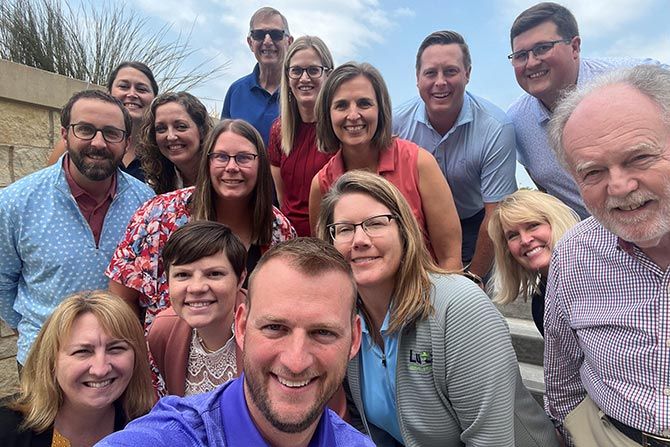Whether formed before the advent of more tax advantageous entities or the result of utilizing specific planning opportunities, many farm and ranch families today still operate out of corporations. Rising land prices, low relative cash flow, and changes in tax law over the last two decades have made the transition of these family farm and ranch operations increasingly difficult. Multi-owner operations face substantial tax challenges when potential divisions are necessary to meet current objectives. For those advising family farm or ranch corporations, Section 355 of the Internal Revenue Code provides a valuable tool for agricultural businesses to divide into separate corporations without triggering immediate income tax consequences, allowing for further tax-planning opportunities down the road.
What Is a Section 355 Transaction?
Unlike liquidations, stock sales, or redemptions that trigger income taxes on asset transfers, a Section 355 spinoff, split-off, or split-up transaction allows a corporation to transfer ownership interests without recognizing a taxable gain, provided certain requirements are met. For agricultural businesses, this strategy enables the separation of assets—such as land, equipment, or operations like crop production or livestock—into distinct corporations, enabling flexible asset management while preserving corporate ownership.
While each Section 355 transaction has different mechanics, they all ultimately result in one shareholder or group of shareholders having ownership in one corporation, while another shareholder or group acquires ownership in a separate corporation.
Key Requirements for a Section 355 Transaction
To qualify as a Section 355 transaction, several key requirements must be met.
One of the requirements is that the transaction is driven by a valid corporate business purpose. The IRS has made clear that a transaction made solely to reduce federal taxes or personal planning considerations will not satisfy the corporate business purpose requirement. In the context of agricultural businesses, common valid purposes include resolving family disputes or financing issues, facilitating family estate planning, or improving operational efficiencies by separating different farming or ranching operations.
Additionally, Section 355 requires that the underlying farm or ranch operation must be an active trade or business that has been continuously conducted for at least five years before the Section 355 transaction. This active business requirement has historically created a problem for agricultural operations that lease property to tenant farmers. While cash lease arrangements will often fail the active business requirement, certain crop share arrangements may be able to satisfy the active business requirement. In making this determination, the IRS will examine whether the corporation provides “substantial management and operational functions” apart from those activities performed by the tenant farmers. The IRS will look to a number of factors including whether the corporation plays a role in the hiring of seasonal workers, supplying and maintaining equipment, arranging financing, planning crop rotation, planting and harvesting, selling crops, and accounting to the tenant farmers.
Planning Considerations
When advising agricultural clients on a potential Section 355 transaction, professionals must ensure the operations and ultimate transaction are structured properly to meet each requirement. Here are some key items to consider:
- Document the Business Purpose: Family operations will want to begin to identify and clearly document these purposes early on in the process to ensure a division is possible. For example, if the proposed transaction is intended to resolve family disagreements or allow different branches of the family to focus on specific farming or ranching activities, this should be clearly outlined in corporate records and communications with the IRS.
- Review and Carefully Structure the Business Operations: Determine whether the agricultural activities being separated qualify as an active trade or business. It may be necessary to adjust the business model or more clearly identify the two separate operations to satisfy the IRS’ criteria for active involvement.
- Consider Asset Allocation: Carefully plan the distribution of assets between the corporations. The allocation must support the business purpose, ensure both corporations can operate independently while meeting the active trade or business requirement, and follow current ownership percentages in effectuating the split.
- Avoid Stock Transfers: Plan ahead for any stock transfers that may need to occur before or after the split. Transfers of a shareholder’s stock before or after a split can affect qualification for a Section 355 split. It is important these transactions are examined carefully and effectuated at the appropriate times.
- Obtain a PLR, Opinion Letter, or Transaction Insurance: To mitigate risks and ensure the transaction meets IRS standards, consider obtaining a Private Letter Ruling (PLR) from the IRS, an opinion letter from a qualified tax attorney, or transaction insurance. These measures can provide clarity and protection, helping to confirm that the Section 355 transaction will be treated as intended for tax purposes.
Conclusion
For farm and ranch corporations, a Section 355 transaction can provide a tax-efficient solution to separate business interests while maintaining the advantages of corporate ownership. However, careful planning is essential to ensure the transaction qualifies for Section 355 treatment. Professionals advising agricultural clients should pay close attention to the active trade or business requirement and ensure the transaction is backed by a valid corporate business purpose.

Nate Patterson is an attorney in the Estate, Business Succession, and Tax Department at Koley Jessen. Patterson works closely with each client and their team of advisors to implement estate, business succession, and wealth and tax planning to ensure each client accomplishes their personal and financial objectives and leaves a lasting legacy. With hands-on experience operating and managing a family farm, he also provides “boots on the ground” expertise to agriculture clients and family businesses on planning matters specific to the ag industry. He can be reached at nathan.patterson@koleyjessen.com.

Nicholas Bjornson is an attorney in the Tax Department at Koley Jessen. His experience in dealing with tax issues and implementing business strategies provides members of the agricultural community efficient solutions to achieve optimal tax benefits and economic consequences. He also represents taxpayers in disputes with the Internal Revenue Service, the Nebraska Department of Revenue, and other state and local taxing authorities. He can be reached at nicholas.bjornson@koleyjessen.com.











